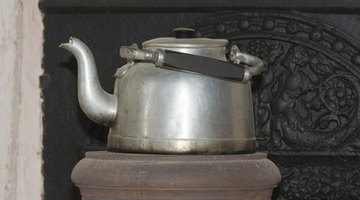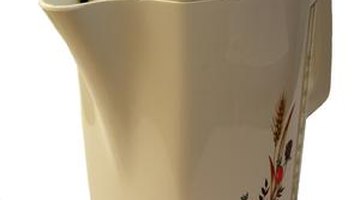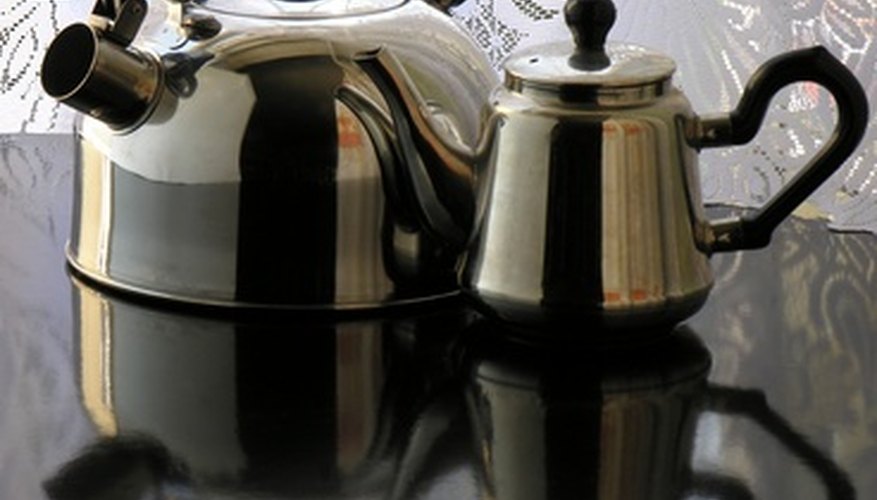Manufacturers use stainless steel to make electric kettles because it is durable and resistant to corrosion. Stainless steel contains chromium, which, according to The International Stainless Steel Forum is what "makes stainless steel 'stainless.'"
History

Early electric kettles featured metals such as copper, nickel and chrome-plated copper. Stainless steel kettles first appeared in the 1950s. The first fully automatic kettle was the stainless steel K1, produced by the British company Russell Hobbs in 1955.
Benefits

Stainless steel electric kettles do not rust or tarnish. Stainless steel can withstand high temperatures and frequent contact with water and still retain a bright and shiny appearance. This makes it an attractive material for use in electric kettles and other domestic appliances.
Considerations

Stainless steel electric kettles get very hot and need careful handling. In the 1970s, manufacturers began making kettles from polypropylene. Plastic kettles offer a safer, lighter and more heat-resistant alternative to stainless steel. Consequently, the majority of electric kettles manufactured today are made of plastic rather than stainless steel.
- Stainless steel electric kettles get very hot and need careful handling.
- Consequently, the majority of electric kettles manufactured today are made of plastic rather than stainless steel.
